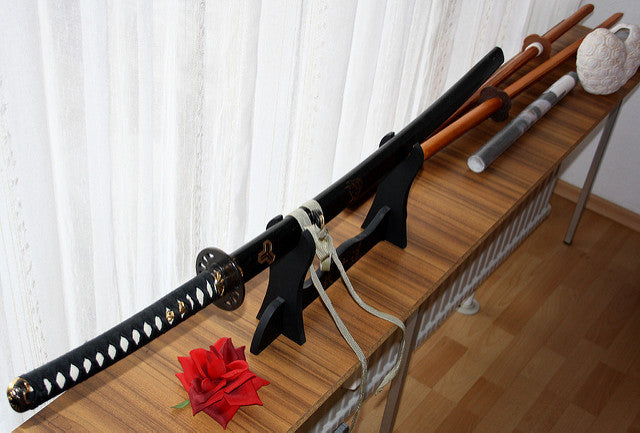Your Cart is Empty

 Are you looking to buy a traditional Japanese katana? Well, let me first congratulate you on your decision. There are dozens of different swords, but the katana is arguably one of the best -- if not the best -- because of its unparalleled level of strength, versatility, quality and attention to detail. Like all swords, though, the katana requires some basic care and maintenance to preserve its original qualities. But you'll want to avoid making the five following mistakes when maintaining your katana.
Are you looking to buy a traditional Japanese katana? Well, let me first congratulate you on your decision. There are dozens of different swords, but the katana is arguably one of the best -- if not the best -- because of its unparalleled level of strength, versatility, quality and attention to detail. Like all swords, though, the katana requires some basic care and maintenance to preserve its original qualities. But you'll want to avoid making the five following mistakes when maintaining your katana.
#1) Storing With Edge Facing Down
The golden rule of storing a traditional Japanese katana is to place it with the cutting edge facing up. This is the way in which samurai warriors carried the katana, and it's the recommended method for storage as well. Storing your katana with the cutting edge facing down in its scabbard increases the risk of damage to the blade.
#2) Not Oiling the Blade
In addition to storing your katana with the cutting edge facing up, you should also oil the blade on a regular basis. Oiling is important because it protects the blade from rust and corrosion. While high-quality, genuine traditional Japanese katanas are naturally resistant to rust, they can and will rust when not properly maintained.
#3) Touching the Blade With Your Hands
You probably won't touch the sharp edge of your katana's blade -- not regularly, at least -- but you may touch the smooth side or dull edge of the blade, believing it's harmless and poses no risk of damage. But touching any area of your katana's blade isn't a good idea. Even if your fingers look clean, they contain salt-based sweat that can damage and degrade the blade. You may not notice any immediate damage, but the salt-based sweat from your fingers can speed up the corrosion process and, ultimately, damage your katana's blade. Leave your fingers off the blade when maintaining your katana.
#4) Storing in a Leather Sheath
Why shouldn't you store your katana in a leather sheath? Although it sounds harmless enough, leather sheaths don't offer much protection. They are too soft and contain too much moisture to adequately protect katanas or other swords from long-term damage. Instead, consider storing your katana in a scabbard. There are lacquered wood scabbards, for example, that are stronger and more durable, making them the perfect alternative to a leather sheath.
#5) Overlooking Humidity
Finally, don't overlook humidity when maintaining and storing your katana. High humidity means there's a lot of moisture vapor in the air, and too much moisture vapor will saturate your katana's blade and contribute to rusting. Keep the environment in which you store your katana around 40% to 50% relative humidity.